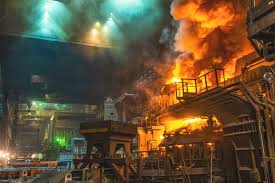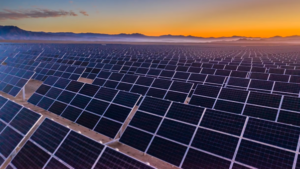Steel has long been the foundation of global industrial development. It’s a vital component of buildings, infrastructure, vehicles, and countless tools and machines we use every day. However, the same industry that has helped build our modern world also has a serious environmental cost. The steel sector is responsible for an estimated 7–9% of global carbon dioxide (CO₂) emissions, making it one of the largest industrial contributors to climate change.
As the world races to reach net-zero targets by mid-century, pressure is mounting on steel producers to overhaul their processes and adopt cleaner, more sustainable production methods.
Why Is Steel So Emissions-Intensive?
The carbon problem in steelmaking stems primarily from its reliance on coal. The traditional blast furnace-basic oxygen furnace (BF-BOF) method involves smelting iron ore using coking coal both as a heat source and a reducing agent. This process not only burns fossil fuels but also causes direct CO₂ emissions through chemical reactions during production. Even as renewable energy sources become more available, these inherent emissions make steel production particularly difficult to decarbonize.
Moreover, global demand for steel is expected to grow by over 30% by 2050, driven by population growth, urbanization, and infrastructure needs, especially in developing economies. Without intervention, this growth could dramatically increase total industrial emissions.
Innovative Technologies Leading the Way
Despite these challenges, several emerging technologies offer hope. One major solution is carbon capture, utilization, and storage (CCUS). By capturing carbon emissions at the source, these systems prevent CO₂ from entering the atmosphere and either store it underground or repurpose it for other applications such as chemical production or enhanced oil recovery. Some steelmakers are integrating CCUS into existing infrastructure, showing that incremental change is possible even in legacy systems.
A more transformative approach involves direct reduced iron (DRI) using hydrogen. In this method, hydrogen replaces carbon as the reducing agent. This process can significantly cut emissions when powered by green hydrogen—produced via renewable electricity. The main byproduct is water vapor instead of carbon dioxide. While the costs are still high and production volumes limited, major steel producers in Europe and Asia are already investing in pilot plants to test this method at scale.
Digitalization and Smarter Steelmaking
In addition to major shifts in production, smaller but impactful changes are being driven by digital technologies. Artificial intelligence, machine learning, and real-time sensors are helping optimize furnace efficiency, monitor energy use, and reduce waste. Predictive maintenance and better supply chain analytics also contribute to emissions reductions by minimizing downtime and unnecessary output. For more on the impact of industrial pollution and emerging solutions, this overview of emissions from steel manufacturing outlines the challenges and technologies reshaping the sector.
The Role of Policy and Collaboration
Technological innovation alone won’t solve the steel industry’s emissions problem. Governments, investors, and companies need to align through policy frameworks, carbon pricing mechanisms, and investment incentives. Public-private partnerships, research funding, and international collaboration can accelerate the deployment of cleaner technologies and level the playing field for sustainable steelmakers.
Looking Ahead
Decarbonizing the steel industry is one of the most complex yet crucial goals in the global climate effort. By embracing a mix of carbon capture, hydrogen-based production, and digital innovation, alongside supportive policy and financial structures, the industry can reduce its environmental impact without compromising on growth or reliability. The future of steel must be both strong and sustainable.





Be First to Comment